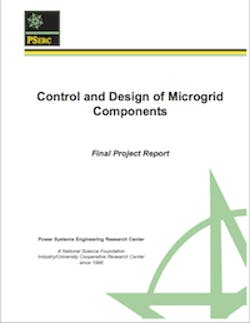Economic, technology and environmental incentives are changing the face of electricity generation and transmission. Centralized generating facilities are giving way to smaller, more distributed generation partially due to the loss of traditional economies of scale. Distributed generation encompasses a wide range of prime mover technologies, such as internal combustion (IC) engines, gas turbines, microturbines, photovoltaic, fuel cells and wind-power. Most emerging technologies such as micro-turbines, photovoltaic, fuel cells and gas internal combustion engines with permanent magnet generator have an inverter to interface with the electrical distribution system. These emerging technologies have lower emissions, and have the potential to have lower cost, thus negating traditional economies of scale. The applications include power support at substations, deferral of T&D upgrades, and onsite generation.
Penetration of distributed generation across the US has not yet reached significant levels. However, that situation is changing rapidly and requires attention to issues related to high penetration of distributed generation within the distribution system. Indiscriminant application of individual distributed generators can cause as many problems as it may solve. A better way to realize the emerging potential of distributed generation is to take a system approach which views generation and associated loads as a subsystem or a “microgrid”. This approach allows for local control of distributed generation thereby reducing or eliminating the need for central dispatch. During disturbances, the control and design of microgrids can separate from the distribution system to isolate the microgrid’s load from the disturbance (and thereby maintaining high level of service) without harming the transmission grid’s integrity. Intentional islanding of generation and loads has the potential to provide a higher local reliability than that provided by the power system as a whole. The size of emerging generation technologies permits generators to be placed optimally in relation to heat loads allow for use of waste heat. Such applications can more than double the overall efficiencies of the systems. By studying the control and design of microgrids already in place, we can learn how to make them more efficient in the future.
